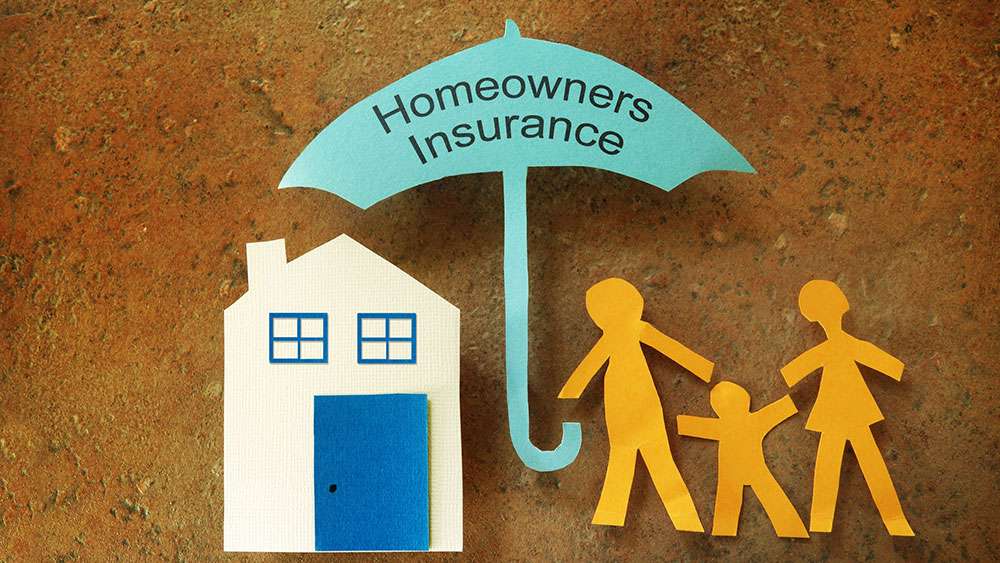For most people, their home represents their single largest financial asset. Protecting this significant investment from unforeseen events is critical to sound financial planning. Hence, homeowners insurance provides an essential safety net against disasters, big and small.
In this article, we explore the different types of coverage included in a standard policy, help you determine how much protection you genuinely need, and provide actionable strategies for finding comprehensive coverage at a competitive price.
What is Homeowners Insurance? (HOI)
Homeowners insurance is a form of property insurance designed to protect an individual\’s home against damages to the house itself or possessions within the home. It also provides crucial liability coverage against accidents in the home or on the property.
Defining Home Insurance: More Than Just Walls and a Roof
Essentially, homeowners insurance is a package policy, bundling various types of coverage into one contract. It primarily covers damage to your property and your legal responsibility (liability) for any injuries and property damage you or your family cause to others.
Furthermore, mortgage lenders almost universally require borrowers to maintain homeowners insurance coverage for the duration of the loan. They do this to protect their financial interest in the property. Without it, obtaining a mortgage is virtually impossible.
The Core Purpose: Financial Protection Against Covered Perils
The fundamental purpose of homeowners insurance is to shield you financially should your home or property be damaged by specific events, known as \”perils.\” Common covered perils include fire, lightning, windstorms, hail, explosions, theft, and vandalism. Policies explicitly list which perils they cover or exclude.
By paying a premium to an insurance company, you transfer the risk of potentially catastrophic financial loss from yourself to the insurer. This ensures that a major disaster doesn\’t lead to financial ruin, allowing you to repair or rebuild your home and replace your belongings after a covered event.
Common Exclusions: What Your Standard Policy Likely Won\’t Cover
While homeowners insurance offers broad protection, it\’s crucial to understand that it doesn\’t cover every possible event or type of damage. Policies contain specific exclusions, which are perils or circumstances not covered by the insurance contract. Knowing these limitations helps you identify potential coverage gaps so you can obtain supplemental insurance if needed.
Natural Disasters: Floods, Earthquakes, and Sinkholes
Standard homeowners policies almost universally exclude damage caused by floods, earthquakes, earth movements (like landslides), and sinkholes. If you live in an area prone to these risks, purchase separate insurance policies or endorsements.
Maintenance Issues vs. Sudden & Accidental Damage
Homeowners insurance is designed to cover sudden and accidental damage, not problems resulting from poor maintenance or general wear and tear. Exclusions typically include damage from gradual water leaks (though the resulting water damage might be covered if hidden), mold (unless resulting from a covered peril and hidden), pest infestations (termites, rodents), rot, rust, and foundation settling over time. Homeownership requires ongoing upkeep, which insurance doesn\’t replace.
Specific Events: War, Nuclear Hazard, Government Action
Like most insurance policies, homeowners insurance excludes large-scale catastrophic events deemed uninsurable due to their widespread potential impact. These typically include acts of war, nuclear hazards or explosions, and actions taken by government bodies (like seizure or destruction of property). These exclusions are standard across the industry.
Addressing Coverage Gaps: Endorsements and Riders
If your standard policy has gaps or insufficient limits for your needs, you can often customize it by adding endorsements (also called riders). Common endorsements include scheduled personal property riders for high-value items (providing broader coverage and eliminating deductibles), water backup coverage (for sewer or drain backups), and increased limits for business property kept at home.
Determining How Much Home Insurance Coverage You Need
Choosing the right coverage limits is arguably the most critical decision when buying homeowners insurance. Being underinsured can lead to devastating financial consequences if you suffer a major loss. Conversely, over-insuring significantly beyond your needs results in paying unnecessarily high premiums.
Dwelling Coverage: Calculating Accurate Replacement Cost
Your dwelling coverage should be high enough to completely rebuild your home in the event of a total loss. This requires estimating the home\’s replacement cost value (RCV), which includes current labor and material costs. Do not confuse this with market value, tax assessment value, or the remaining balance on your mortgage.
Insurers offer calculators and tools to help estimate RCV, factoring in square footage, construction materials (brick, frame), roof type, interior features (custom cabinetry, high-end fixtures), and local building costs. You can also consult a professional appraiser or local builders for a more precise estimate.
Personal Property: Inventory Your Belongings
Create a detailed home inventory to determine adequate personal property coverage. Go room by room, listing your possessions, including purchase dates, estimated values, and serial numbers where applicable. This inventory is invaluable for selecting the right coverage limit and essential if you need to file a claim.
Decide whether you want Actual Cash Value (ACV) or Replacement Cost Value (RCV) coverage for your belongings. While RCV costs more, it prevents you from having to cover the difference between a used item\’s depreciated value and the cost of a new replacement out-of-pocket. For most homeowners, RCV coverage offers superior financial protection.
Liability Limits: Protecting Your Assets
Your personal liability coverage protects your financial future if you\’re sued. Standard limits often start at $100,000, which is frequently insufficient in today\’s environment. A good rule of thumb is to carry enough liability coverage to protect your total net worth (assets minus debts).
Consider all your assets, including savings, investments, and the equity in your home, when selecting your liability limit. Experts typically recommend limits of at least $300,000 to $500,000. If your assets exceed this, consider purchasing a separate personal umbrella liability policy, which provides additional coverage (typically $1 million or more) above your homeowners and auto policy limits.
The Role of Your Deductible
Your deductible is the out-of-pocket amount on each claim before your insurance coverage kicks in. Deductibles apply separately to claims for dwelling/other structures and personal property. Choosing a higher deductible will lower your premium, but it means you\’ll bear more upfront costs if you file a claim.
Key Factors That Influence Your Homeowners Insurance Cost
Homeowners insurance premiums can vary significantly based on various factors related to the property, the policyholder, and the chosen coverage. Insurers use complex algorithms to assess risk and determine the price you\’ll pay.
Location-Based Risks (ZIP Code Matters)
Where your home is located plays a significant role in premium calculations. Factors include the area\’s susceptibility to natural disasters like hurricanes, tornadoes, wildfires, or severe winter storms.
Other location factors include local crime rates (theft risk) and the distance to the nearest fire hydrant and fire station (response time impacts potential fire damage). Urban areas might have higher crime but better fire protection, while rural areas might have lower crime but slower emergency response.
Your Home\’s Characteristics
The age, size, construction materials, and overall condition of your home significantly impact premiums. Older homes may have higher risks associated with outdated plumbing, electrical wiring, or roofing, leading to higher costs unless recently updated. Furthermore, masonry (brick) homes often cost less to insure than frame homes due to better fire resistance.
The condition of your roof is particularly important; newer roofs in good condition generally result in lower premiums. Also, larger homes naturally cost more to insure due to higher replacement costs, along with features like swimming pools or trampolines, which can increase premiums due to heightened liability risk.
Safety and Protective Features
Insurers often provide discounts for features that reduce the risk of claims. For example, installing centrally monitored fire and burglar alarm systems can significantly lower your premium. Other protective devices like deadbolt locks, smoke detectors, fire extinguishers, and storm shutters (in hurricane-prone areas) can also qualify you for discounts.
Maintaining your home, such as trimming trees away from the house or ensuring secure railings, also contributes to lower risk. Proactive safety measures demonstrate responsibility and can lead to savings.
Strategies for Securing the Best Coverage and Competitive Rates
Finding the right homeowners insurance involves balancing adequate protection with affordable cost. While you don\’t want to skimp on essential coverage, there are innovative strategies you can employ to manage your premiums effectively.
Shop Around and Compare Home Insurance Quotes Annually
Insurance premiums for the same coverage can vary significantly between companies, so comparison shopping is essential. Obtain quotes from at least three different insurers each year or when your policy is up for renewal. Include national carriers, regional companies, captive agents (representing one company), independent agents (representing multiple companies), and direct writers (selling online or by phone).
Don\’t focus solely on the price tag; carefully compare the coverage limits, deductibles, exclusions, and endorsements offered in each quote. And ensure you are comparing apples-to-apples coverage.
Bundle Home and Auto Insurance Policies
Most insurance companies offer substantial discounts, often ranging from 5% to 25%, if you purchase multiple policies, such as homeowners and auto insurance. This \”bundling\” or multi-policy discount is one of the easiest ways to save money. Evaluate quotes for bundled policies versus separate policies to confirm the savings.
Consolidating your policies with one insurer can also simplify billing and claims processes. However, ensure the combined cost and coverage levels are competitive. Sometimes, buying separately from specialized insurers might still be cheaper or offer better protection.
Ask About Available Home Insurance Discounts
Insurers offer a variety of discounts, but they aren\’t always automatically applied, so be sure to ask. Common discounts include those for installing security systems, smoke detectors, deadbolt locks, or storm shutters. You might also qualify for discounts based on your age (senior discount), marital status, claims-free history, or affiliation with certain groups (alumni associations, professional organizations).
Updating your home\’s systems, such as plumbing, electrical, heating, or replacing your roof, can also lead to discounts. Plus, maintaining good credit can qualify you for lower rates through a better insurance score.
Consider Raising Your Deductible (Carefully)
Increasing your deductible is a straightforward way to lower your premium. For example, raising it from $500 to $1,000 could reduce your premium by as much as 10-20%. However, only choose a deductible amount that you can comfortably afford to pay out-of-pocket on short notice if you need to file a claim.
Evaluate the potential premium savings against the increased financial risk you are taking on. Ensure you have an emergency fund sufficient to cover your chosen deductible.
Review Your Policy Regularly (Especially After Major Changes)
Don\’t just set and forget your homeowners insurance policy. Review your coverage at least once a year during renewal time to ensure it still meets your needs and reflects any changes.
Major life events or changes to your property warrant an immediate policy review. Additionally, if you\’ve undertaken significant renovations that increased your home\’s value, purchased expensive new possessions, or started a home-based business, you likely need to update your coverage limits or add endorsements.
Closing Points
Homeowners insurance is a fundamental pillar of financial security for homeowners, shielding your most valuable asset. Therefore, understanding your policy\’s details and securing sufficient replacement cost coverage are important to financial stability.
Remember to manage costs through comparison shopping and discounts, and review your policy regularly, especially after life changes.
© 2025 xpertRealtyMarketing.



